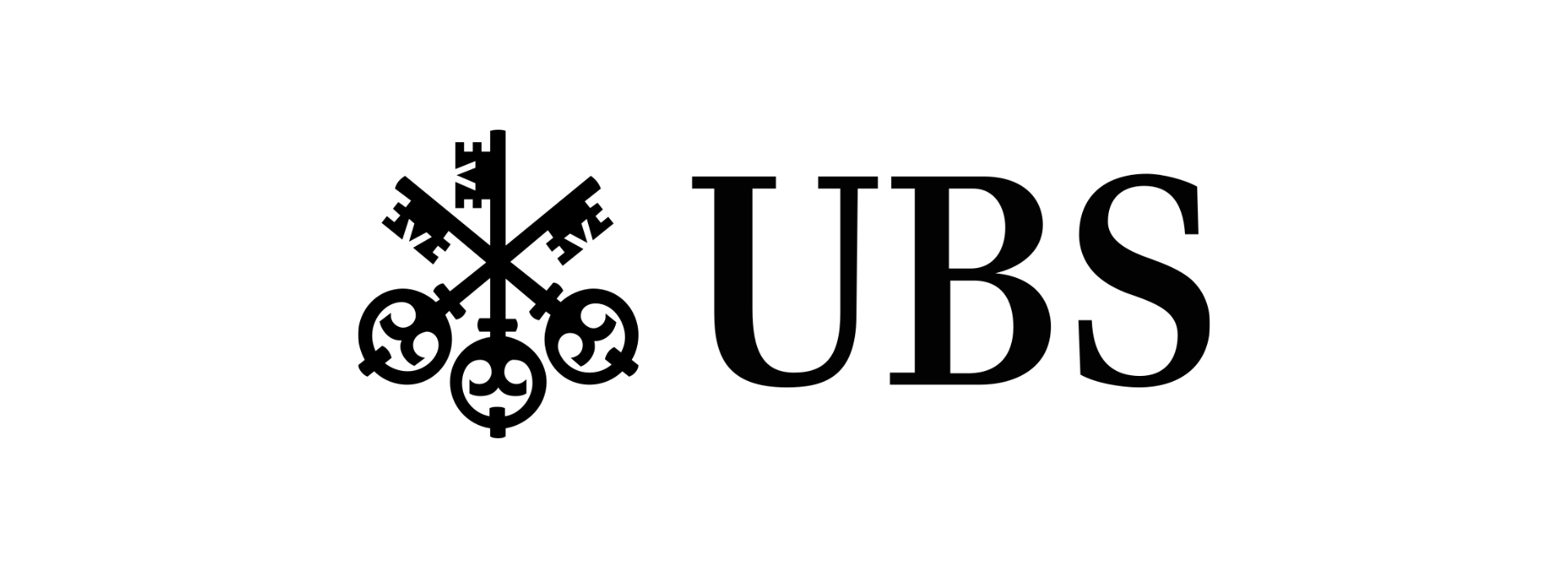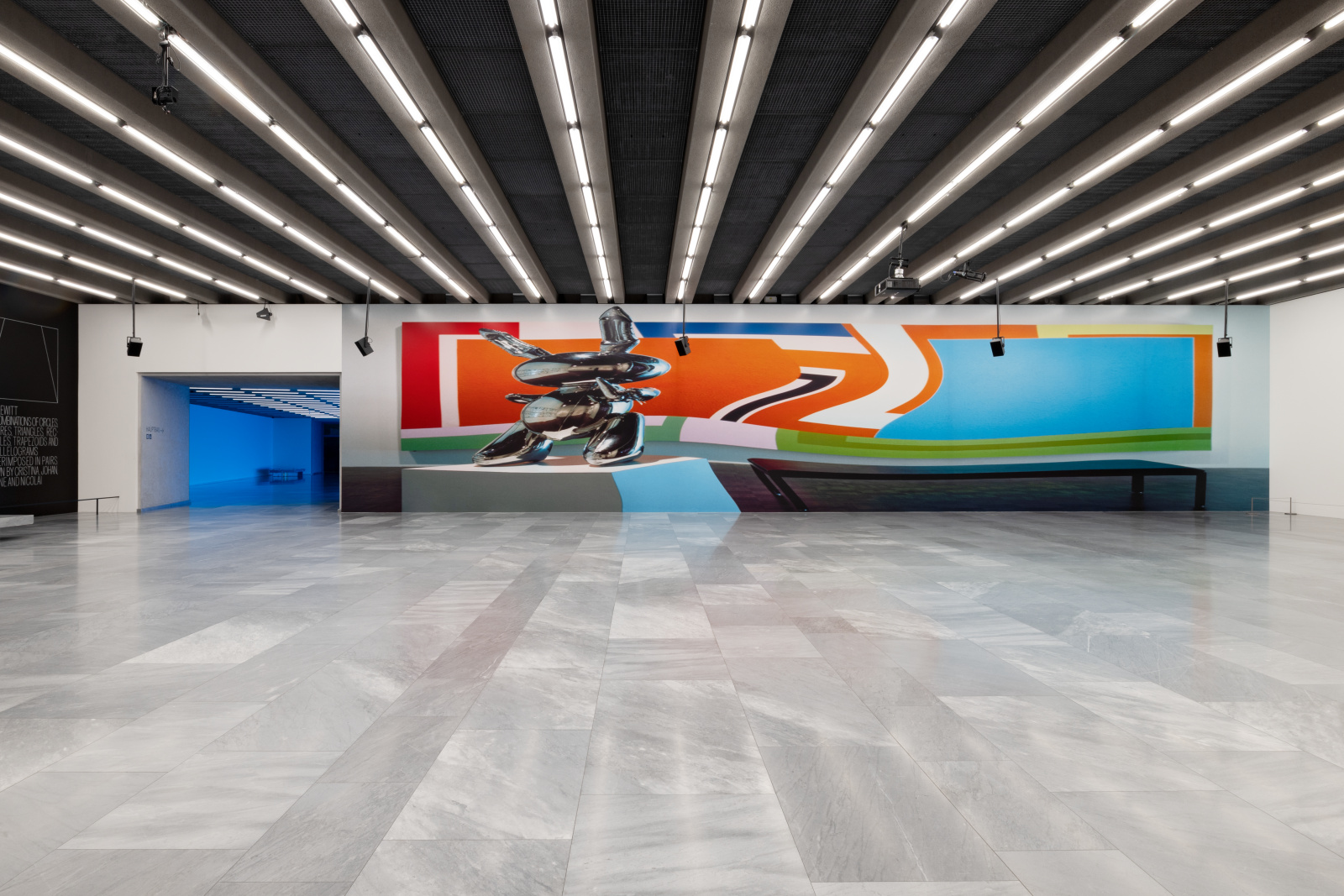
Louise Lawler, installation view, Kunstmuseum Basel, 2024, Courtesy the artist and Sprüth Magers, Photo: Gina Folly
Louise Lawler
Collection presentation, Neubau Eventfoyer, free entry
Louise Lawler presents the two works “(Bunny) Sculpture and Painting (adjusted to fit, distorted for the times)” and “Three Flags (swiped and taken) (adjusted to fit) (mirrored or flipped) Cease Fire” at Kunstmuseum Basel, which enter into a dialog with the works “Damascus Gate. Variation I” (1969-70) by Frank Stella and Sol LeWitt's “Wall Drawing #304” (1977) on site. Both works are part of the “adjusted to fit” series, in which Lawler digitally adapts her photographs to fit the exhibition space.
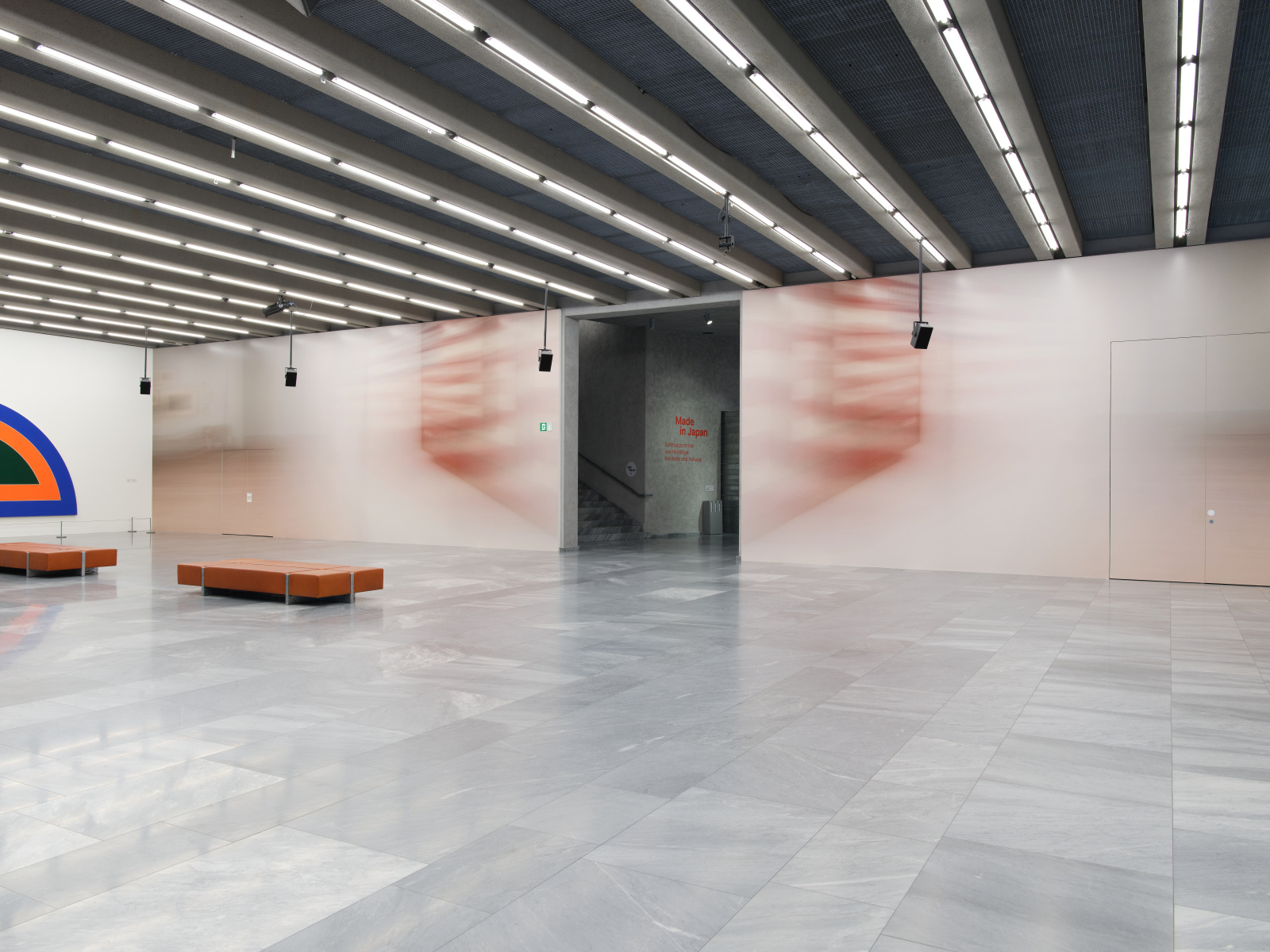
Louise Lawler, Three Flags (swiped and taken) (adjusted to fit) (mirrored or flipped) Cease Fire, 2022/2024, Courtesy the artist and Sprüth Magers, Photo: Gina Folly
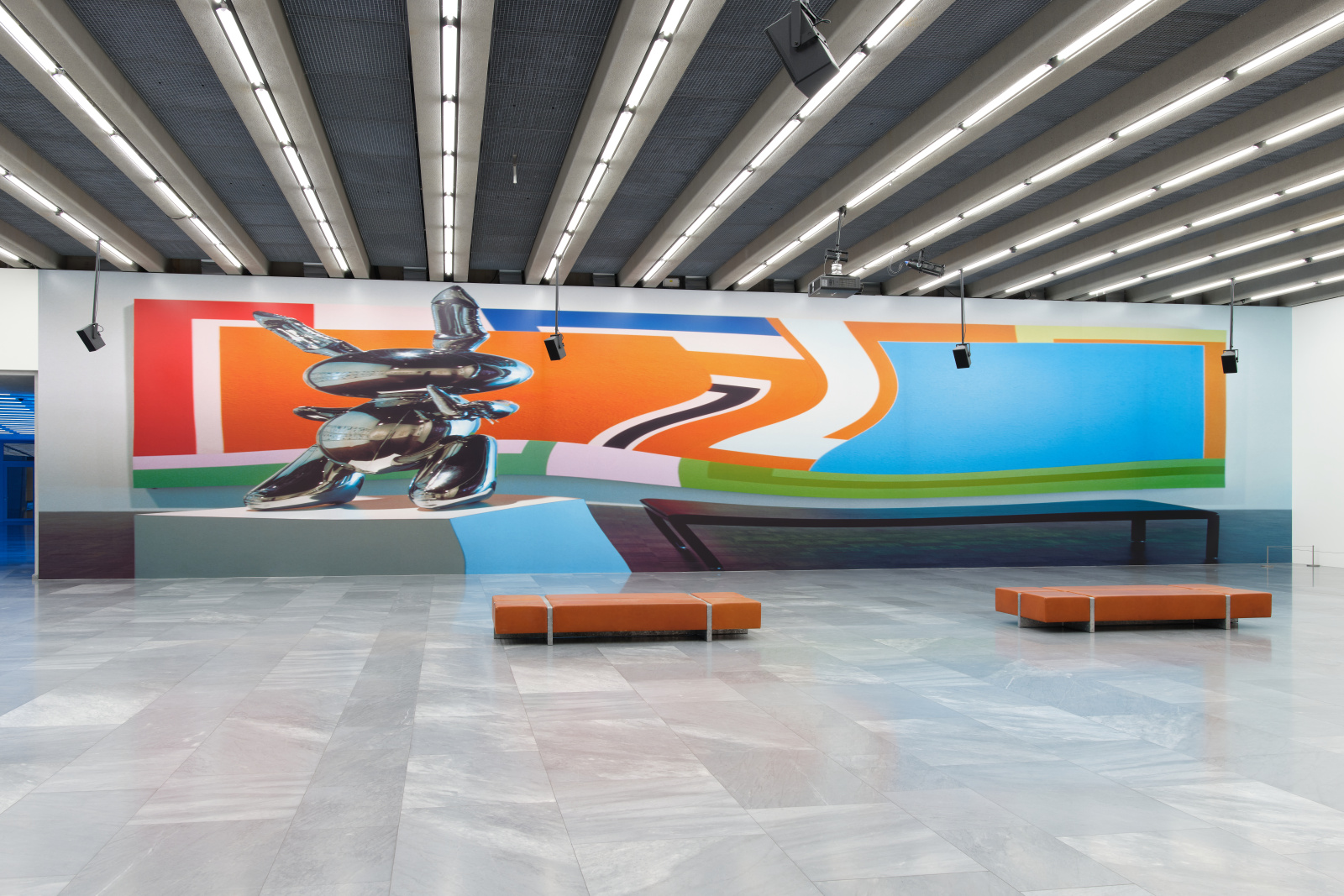
Louise Lawler, (Bunny) Sculpture and Painting (adjusted to fit, distorted for the times), 1999/2015/2019, Courtesy the artist and Sprüth Magers, Photo: Gina Folly
“(Bunny) Sculpture and Painting (adjusted to fit, distorted for the times)” shows a distorted photograph of Jeff Koons' “Rabbit” (1986) and Peter Halley's “The Acid Test” (1992), which Lawler photographed in the exhibition “The American Century” at the Whitney Museum in 1999. The exhibition was widely and extremely controversially discussed at the time and raised questions about national identity and overarching narratives of art history.
“Three Flags (swiped and taken) (adjusted to fit) (mirrored or flipped) Cease Fire” shows Jasper John's “Three Flags” (1958), which Lawler photographed in the exhibition “Jasper Johns: Mind/Mirror” at the Whitney Museum in 2021. As the title makes clear, the work belongs to the 'swiped' group of works. The verb 'swiped' refers to the fleeting nature of an image and alludes to the way we consume visual information today.
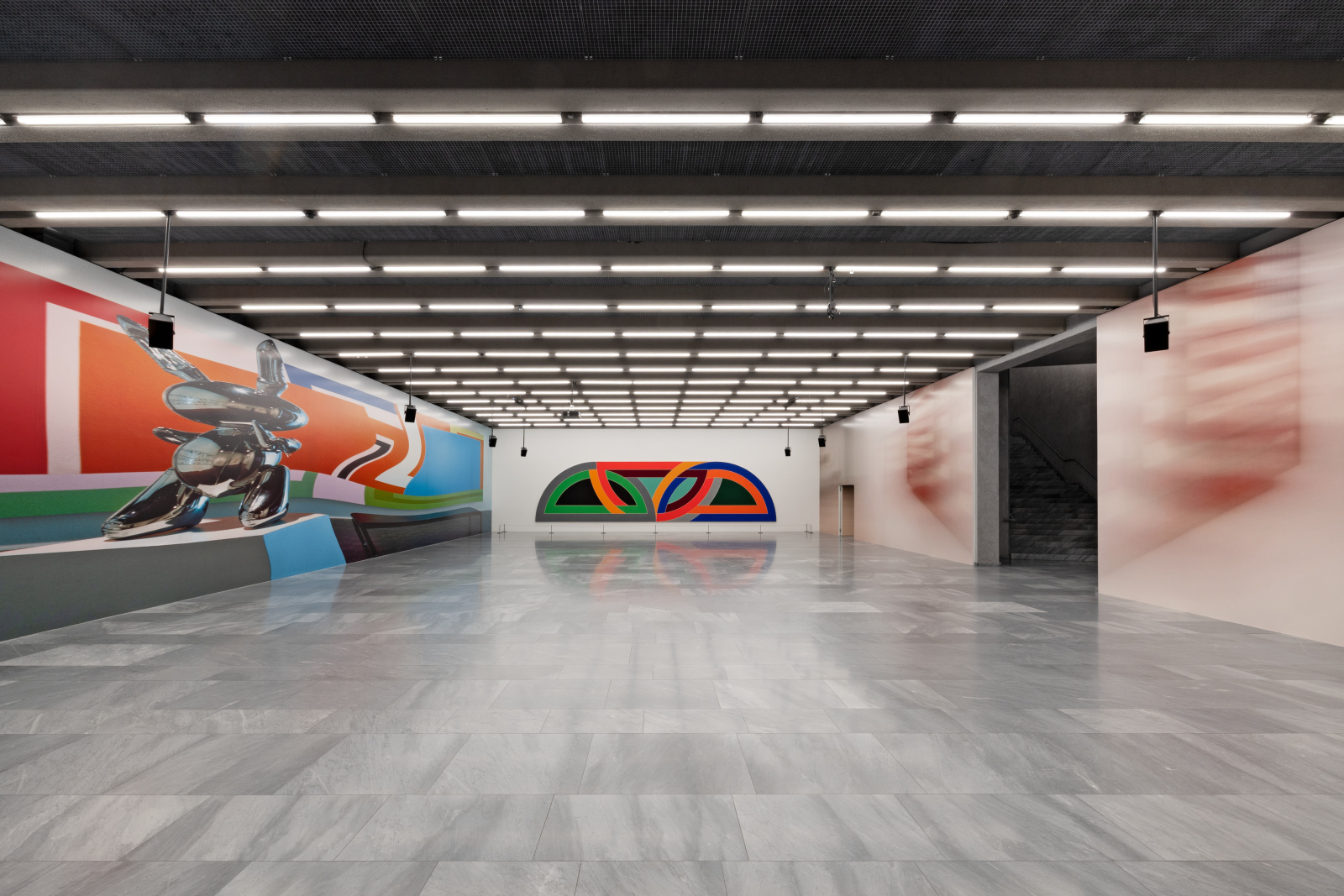
Louise Lawler, installation view with Frank Stella, Damascus Gate. Variation I, 1969–1970, Kunstmuseum Basel, 2024, Courtesy the artist and Sprüth Magers / © 2024, ProLitteris, Zurich, Photo: Gina Folly
The work “Flag above White with Collage” (1955), donated by Jasper Johns in 1994, is exhibited on the second floor of the new building and although Jasper Johns' iconic American flag almost disappears in Louise Lawler's work, it remains recognizable for many viewers. Louise Lawler emphasizes the cult of the 'masterpieces of art history' through the clear recognizability of the original. At the same time, she questions this cult and the national identity and art historical canon associated with it by taking Johns' work, changing it and exhibiting it repeatedly. The works are printed on self-adhesive vinyl and installed in the room, which is part of the art presentation. The tension between the photographed works in the original presentation, Louise Lawler's work and Lawler's work in a new context plays a central role in her work.
Bio
American artist Louise Lawler (born 1947) is one of the most important representatives of institutional critique works with photographs, material images and installations. Her work focuses on photographs of works by other artists, mostly men, which are exhibited in museums, storerooms, auction houses and collectors. Based on the principles of conceptual art, Louise Lawler uses photography as a conceptual tool to draw attention to unspoken aspects of the art world. Her photographs examine the complex exhibition, reception and circulation conditions of artworks and analyze them as objects in their context. In doing so, they illustrate how the meaning of the photographed works changes depending on the environment and form of presentation. Louise Lawler questions the art system in which she participates and restages many of her own works in order to question their iconic quality.
